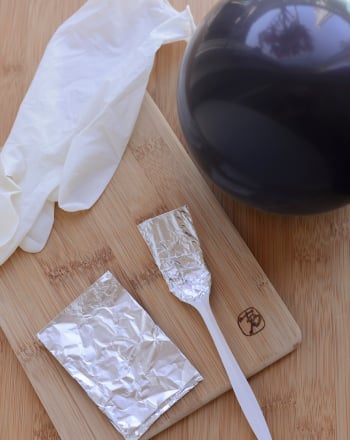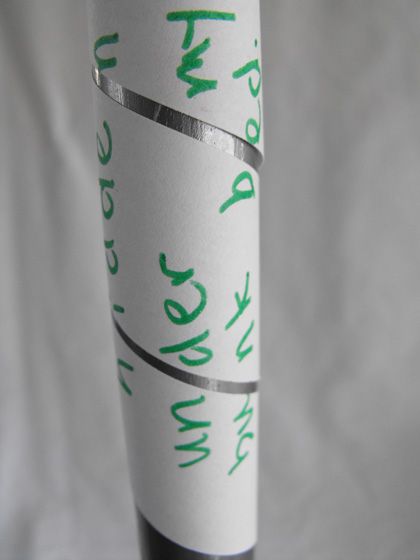Science project
How to Make a Hygrometer: Sling Psychrometer
First of all, what is a hygrometer and why would you want to make one? A hygrometer is a tool used by meteorologists (scientists who study the weather) to measure how much moisture is in the air.
You might have heard an older person say “It’s the humidity, not the heat” on one of those days in early August when walking from the couch to the refrigerator is a major effort. Humidity is the amount of water vapor (moisture) in the air. We become exhausted on hot, humid days because we can’t sweat efficiently. The air is already so full of water, little sweat evaporates off our skin to cool us. Instead, we feel sticky and hot. On dry summer days, or in the desert, the temperature might be just as high, but we won’t feel as uncomfortable because the humidity is lower. Meteorologists created a term to describe quantitatively how full of water vapor the air called relative humidity. It is the ratio of the actual amount of water vapor in the air relative to the amount that could be there, at that temperature. If you ever have walked through fog, you have experienced 100 percent humidity. Humidity levels in the desert are often 10 percent.
You are going to make a special type of hygrometer called a sling psychrometer. It is fairly easy to make, and you can use it to determine the relative humidity. After you get an outdoor relative humidity measurement, you can compare it with what local weathermen have calculated.
Problem
How can humidity be measured?
Materials
- Cotton gauze (the kind used in first aid kits)
- Scissors
- Small rubber band
- ½ liter plastic soda bottle
- Clear plastic strapping tape
- Two identical red alcohol type Celsius thermometers (no mercury!)
- Water
- String
- Safety goggles
Procedure
- Moisten a double layer of gauze with water.
- Use the rubber band to cover the bulb of one of the thermometers with the gauze.
- Secure the thermometer with gauze on one side of the plastic bottle and the other thermometer to the opposite side, using multiple pieces of strapping tape. Make sure you can still see the numbers and red alcohol in the thermometer. Why is using a mercury thermometer a bad idea for your hygrometer?
- Tie an 18-inch piece of string onto the top of the bottle.
- Have a grown-up make sure that you have attached the thermometers and the string securely.
- Put on your safety goggles and clear the area.
- Holding tightly to the end of the string, spin the bottle around in a circle in the air for a minute.
- Immediately record the temperature at both thermometers.
- Find the difference between the two temperatures.
- Use the table to determine the relative humidity.
Results
Results will vary depending on the weather conditions in your area. If you are comparing your results with those of your local meteorologists, make sure to do the experiment outside, because indoor humidity can be quite different than outdoor humidity. You should expect that the wet bulb temperature will always be lower than the dry bulb.
Why?
Because there was chance that you could break a thermometer while spinning the bottle, you would not have wanted to use one filled with mercury. Mercury is a poison and the spinning motion could spread it everywhere. The reason the wet bulb temperature is always lower than the dry bulb temperature is that water is evaporating from the wet bulb. This cools the wet bulb. The lower the relative humidity of the air (the drier the air), the more water evaporates from the wet bulb, and the more the temperature difference between the wet and dry bulb. Suppose the outdoor temperature was 22 °C, and the wet bulb temperature was 12 °C. That’s a 10 degree difference. This translates to 29% relative humidity. On a very humid day, the air is already so full of water, little water can evaporate from the wet bulb. Suppose the dry bulb temperature is still 22 °C, but the wet bulb temperature is 21°. Even after a minute of spinning, little water was able to evaporate. This translates to 92% relative humidity.
Going Further
Now that you are an expert on relative humidity, investigate more about how temperature affects how much water air can hold. All you need is an icy glass of lemonade on a warm, humid day. What happens to the water in the air when it meets the cold outside of the glass?
Education.com provides the Science Fair Project Ideas for informational purposes only. Education.com does not make any guarantee or representation regarding the Science Fair Project Ideas and is not responsible or liable for any loss or damage, directly or indirectly, caused by your use of such information. By accessing the Science Fair Project Ideas, you waive and renounce any claims against Education.com that arise thereof. In addition, your access to Education.com's website and Science Fair Project Ideas is covered by Education.com's Privacy Policy and site Terms of Use, which include limitations on Education.com's liability.
Warning is hereby given that not all Project Ideas are appropriate for all individuals or in all circumstances. Implementation of any Science Project Idea should be undertaken only in appropriate settings and with appropriate parental or other supervision. Reading and following the safety precautions of all materials used in a project is the sole responsibility of each individual. For further information, consult your state's handbook of Science Safety.













